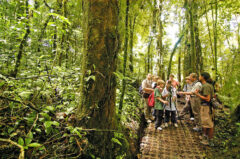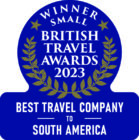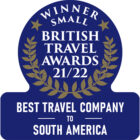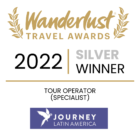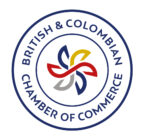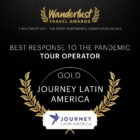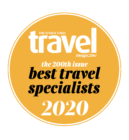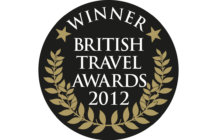Private Journeys
Signature Cuba: The best of the highlights
14 days from £2,410pp
(based on two people sharing & excluding flights)
Essentials
-
Tour info
-
Country info
-
What's included
Tour info
Summary Of Nights
14 days, 13 nights: Havana 2; Viñales 2; Las Terrazas 2; Cienfuegos 1; Trinidad 2; Cayo Santa María 3; Havana 1.
Accommodation
This trip uses independent mid-range accommodation that we think is great value, comfortable, well-located and which showcases a touch of local character. Properties vary in heritage from colonial style to resort-style lodges, but will all be well-equipped with rooms that have private bathrooms. All accommodation is flexible and can be tailored to meet your specific preferences and requirements.
Transport
8 scenic road journeys.
Meals
Breakfast daily; lunch day 9; full board days 10-12.
Guides
Our local, trusted and carefully selected partners understand the expectations of our customers very well, and their staff and guides are consistently singled out for praise by clients on their return. On this holiday, you will be joined by different guides for each activity and or region, ensuring you benefit from specialised expertise and knowledge, often from someone local to the area.
Optional Excursions
As well as any included activities, this Private Journey includes some free time for optional excursions. As optional excursions are often subject to availability, we recommend you discuss and arrange them with your Travel Expert as early as possible before you depart.
Country info
When is the best time to visit Cuba?
The high season for visitors is Dec - Apr when the weather is usually sunny, mostly dry and not too humid, though there can be cool days. Hurricane and tropical storms are possible Aug - Nov.
For more detailed information visit our When To Go section.
What's the official language of Cuba?
The official language of Cuba is Spanish.
What is the official currency in Cuba?
The Cuban National Peso (CUP) is the only official cash currency in Cuba, however many outlets will accept US dollars and some may also accept Euros. We recommend you bring your funds in US$ cash and exchange a small amount into CUPs when in Cuba. You can also exchange Euros but we don't recommend Sterling. Your bank notes should not be damaged in any way. As a foreign tourist you should receive a considerably better exchange rate than the ‘official’ rate used for commercial transactions.
A limited number of ATM's are available around Cuba, but queues can be large, charges can be high, and the official rate of exchange is given which makes them much less attractive.
Changing small amounts at a time into CUPs will help to avoid having leftover currency when you leave Cuba (it is not always easy to exchange CUPs back to other currencies).
Private hotels, bars and restaurants often accept payments directly in US$ (or Euros) cash. For these transactions bring small denominations if possible, and note that coins will not be accepted. Change may sometimes be given in CUPs.
You’ll generally need to use a credit/debit card to cover transactions in government shops and hotels, as well as car-rental extras such as petrol and local fees. However, some clients have issues using cards in Cuba so don’t rely on them as your only source of funding. Be sure to check with your bank that your cards are accepted in Cuba (cards linked to US banks are not accepted locally). At Cadeca exchange offices it is now possible to purchase a prepaid card (Tarjeta Clasica) which can be bought in cash with US Dollars/Euros. These can be used to obtain petrol.
Using money changers in the street is not recommended as it is illegal and you are more likely to receive forgeries.
What is the time difference between Cuba and UK?
Cuba operates daylight saving hours, so is generally 5 hours behind the UK year round, but as the dates of their time changes are slightly different, there are short periods around March and October/November when this will vary.
Do I need a visa to travel to Cuba?
Holders of a full British passport do not require a visa, although passports must be valid for at least 6 months after the trip begins. A completed Cuban tourist card is essential for all UK citizens travelling to Cuba, we will organise this for you. Clients with a different nationality should enquire with us or check with the Cuban consulate.
APIS – Many countries now oblige airlines to provide additional information about passengers prior to the flight departure. This Advance Passenger Information (APIS) must be supplied to us promptly in order to issue tickets and avoid fare increases. We will provide the airlines with the relevant details if we are booking your international flights. If the information is not provided you may be denied boarding.
What vaccinations are recommended for visiting Cuba?
Please check Travel Health Pro for information on health recommendations and vaccinations for the destinations you are visiting. Please note that many Latin American countries require proof of vaccination against Yellow Fever if you have recently travelled to another country where Yellow Fever is present.
What places combine well with Cuba?
Mexico’s Yucatán is a great place to combine with Cuba. Flights from Cancún to Havana take approximately 1hr 15mins.
What are the festivals and cultural events in Cuba?
There are carnivals throughout the country on different dates. Havana’s carnival moves around date-wise year upon year, but is always accompanied by parades, music, drumming and dancing. Santiago’s carnival in July is probably the biggest and the best.
International Jazz Festival takes place in Havana in December. This is one of the world’s best, and there are workshops and concerts to enjoy.
Inspired by this trip
Our exciting range of articles on Latin America explore everything from iconic destinations and lesser-known cultural gems to delicious traditional recipes. You’ll also find exclusive travel tips, first-hand client reviews and the chance to get your personal questions answered by our travel experts.
Papagaio
Your edit for Latin American inspiration
Our exciting range of articles on Latin America explore everything from iconic destinations and lesser-known cultural gems to delicious traditional recipes. You’ll also find exclusive travel tips, first-hand client reviews and the chance to get your personal questions answered by our travel experts.
View Extraordinary Inspiration

